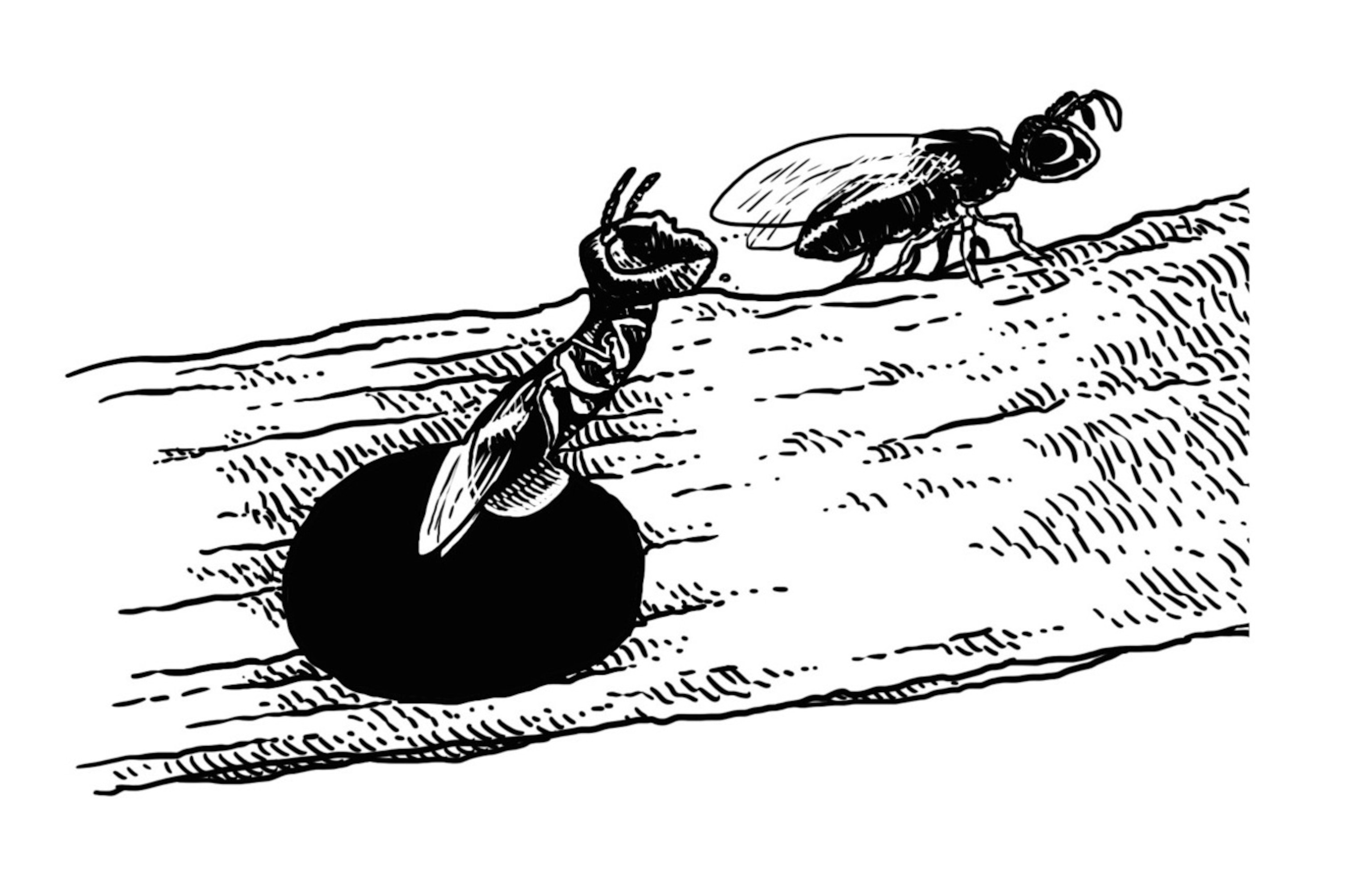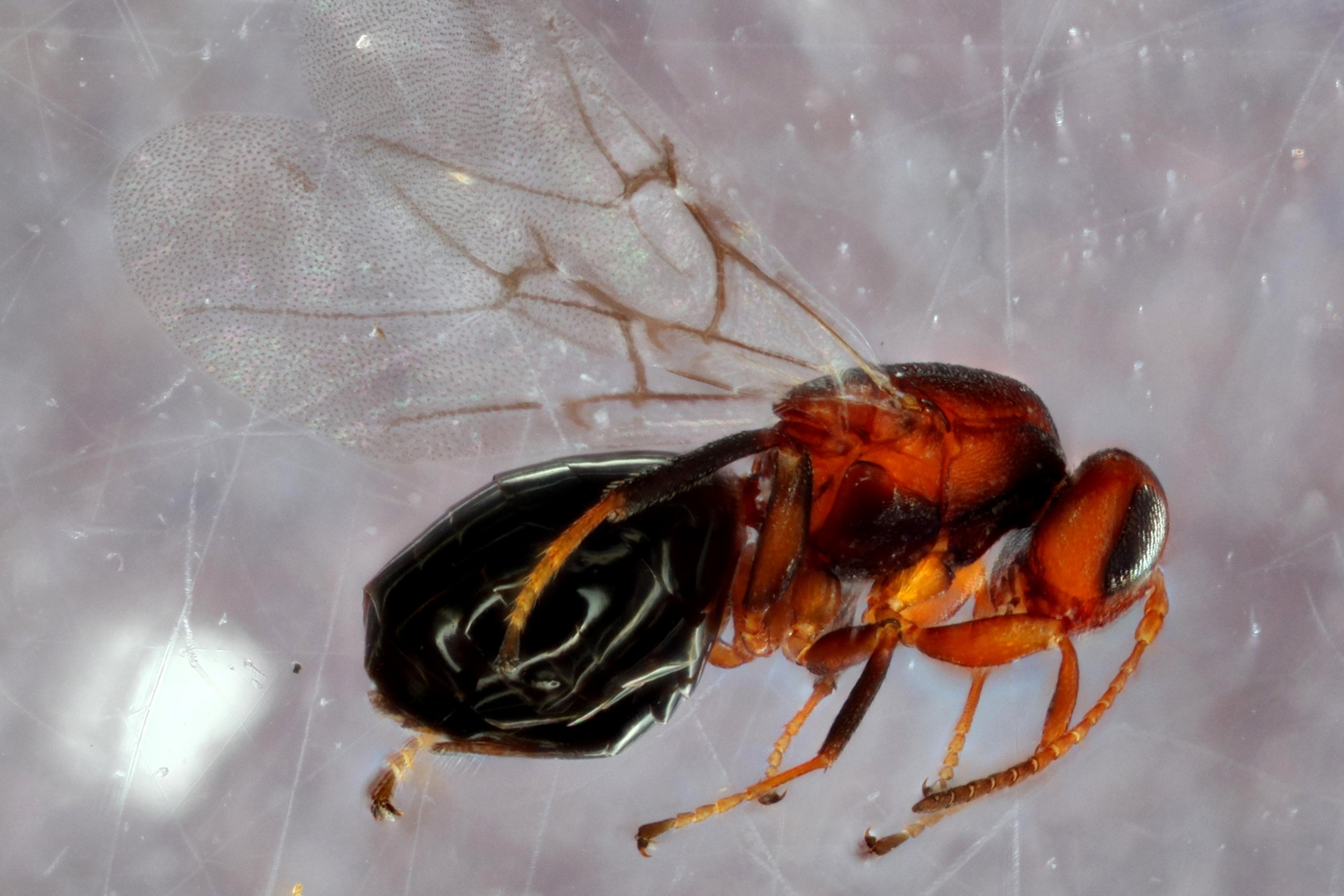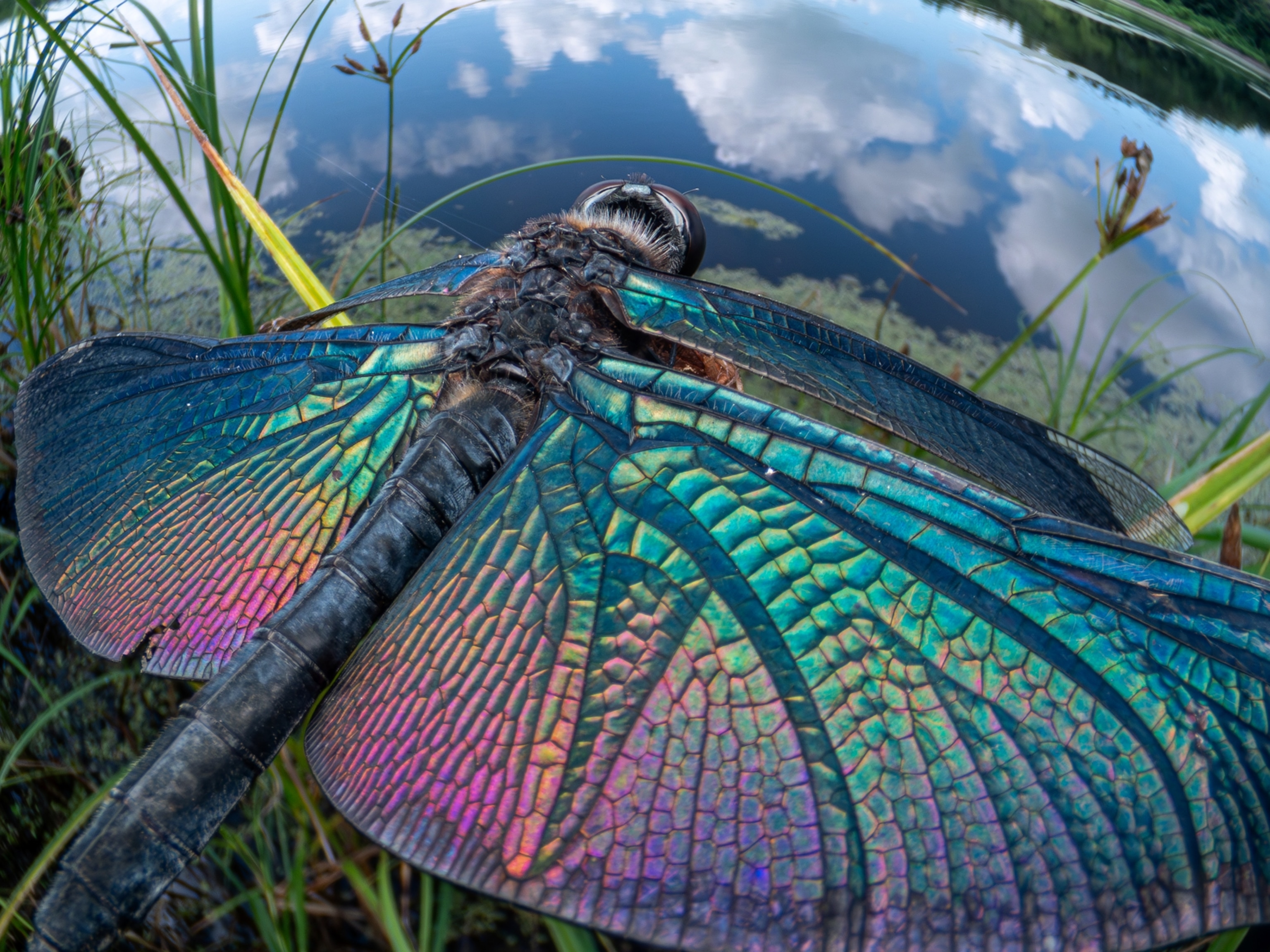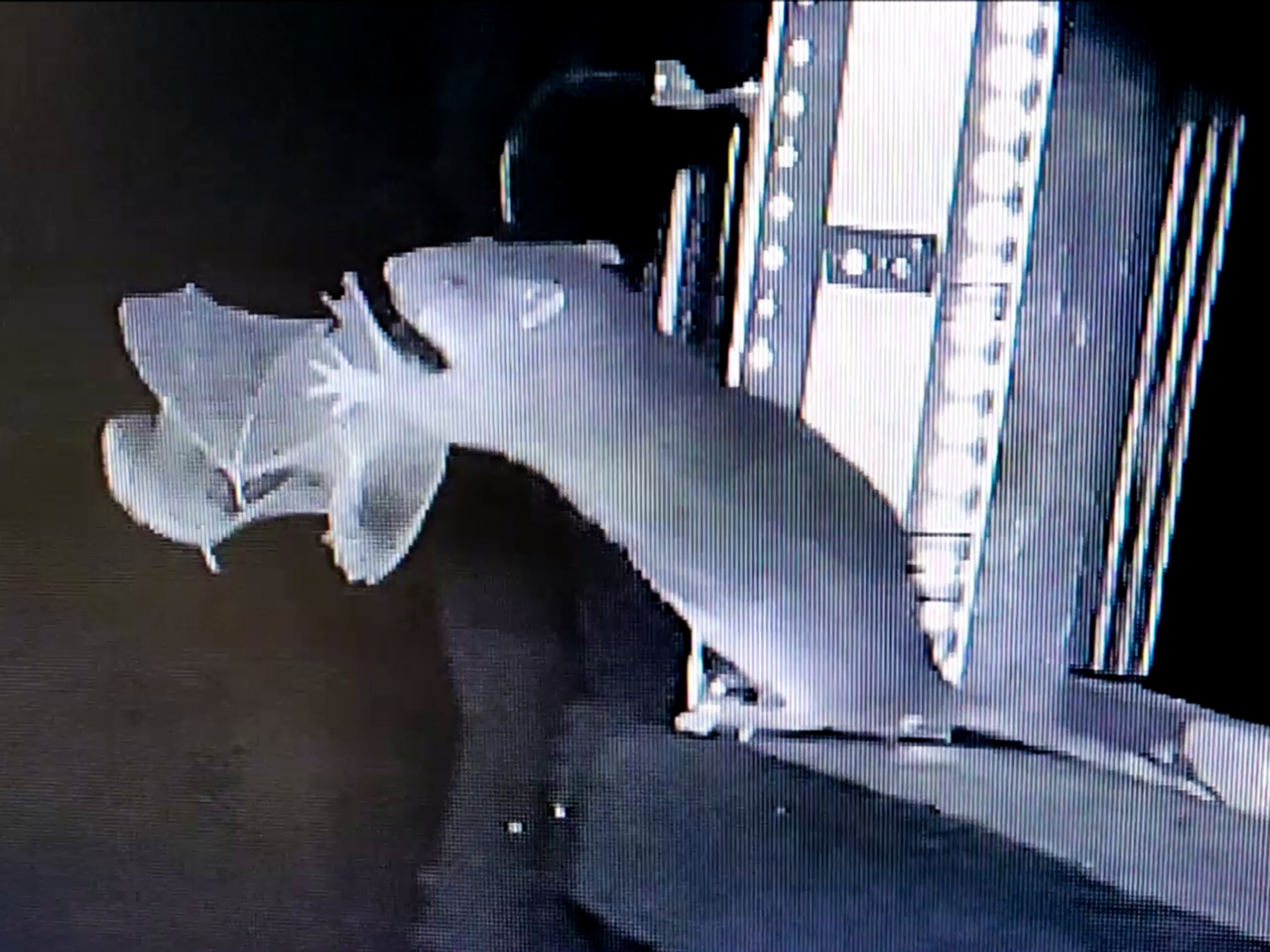
New Crypt-Keeper Wasp Is Parasite That Bursts From Host's Head
The insect, native to the southeastern U.S., is named after the Egyptian god of evil and chaos—for good reason.
Scientists have discovered a new parasitic wasp species with a life cycle so diabolical, they named it after Set, the Egyptian god of evil and chaos.
Meet Euderus set, otherwise known as the crypt-keeper wasp.
Native to the southeastern United States, this species lays its egg inside the tiny, wooden chambers that another parasitic wasp species, the gall wasp (Bassettia pallida), carves out in sand live oak trees. These knobby protuberances, known as galls, are sort of like tree cysts induced by the presence of the host wasp's young.
Once the egg hatches, the crypt-keeper larva burrows into the other wasp and takes over its mind, forcing it to start tunneling through the tree’s bark to freedom—a feat the crypt-keeper struggles to perform on its own. (Read more about mindsucking parasites in National Geographic magazine.)
Even more insidious, the larva then forces its victim to drill a hole too small for its own escape. Once the larger wasp is wedged in the opening it’s created, the crypt-keeper consumes its host from the inside out, finally erupting from B. pallida’s forehead out into the world.
It’s worth noting that the crypt-keeper’s namesake, Set, was thought to have control over other animals like hyenas and serpents. He also trapped his brother, Osiris, in a crypt, where he murdered him and mutilated his remains.
Even Kelly Weinersmith, a parasitologist at Rice University and lead author of a new study on the crypt-keeper, says the behavior is creepy.
As a claustrophobe, she shudders at what B. pallida must endure—“being stuck inside of a tight tunnel with no room to move, all the while having your insides eaten out.” (Read about hundreds of new parasitic wasps species found in Costa Rica.)
“But it’s also awesome and amazing that a parasitoid has managed, through natural selection, to manipulate its host in this particularly cool way,” says Weinersmith, whose study was published recently in Proceedings of the Royal Society B.
Tales From the Crypt
Most of us are familiar with the idea of parasitism, in which one creature—think a leach or tick— makes its living at the expense of another.

Hyperparasites are parasites that take advantage of other parasites, such as parasitic wasps that lay eggs in other parasitic wasps that in turn lay eggs in caterpillars. (See more pictures of impressively gruesome parasites.)
But a parasite (E. set) that manipulates the behavior of another parasite (B. pallida) that manipulates the behavior of its host (creating galls in oak trees)?
This kind of macabre Russian nesting doll is called hypermanipulation, and it’s much less understood.
“It's safe to say these researchers have uncovered something special,” says Emily Meineke, a National Science Foundation postdoctoral fellow at Harvard University who studies the interactions between parasitoids and their hosts.
What’s more, Meineke was impressed with how the researchers showed that the crypt-keeper benefits by manipulating its host.
Weinersmith and colleagues did this by sealing crypt-keepers inside galls without another wasp to hijack, and then recording how many made it out on their own. In the end, crypt-keeper wasps were three times more likely to die in their crypts without the help of the other wasp species. (Check out five more mind-control parasites with clever behaviors.)
“There are plenty of examples of hyperparasitism among parasitoid wasps, but manipulation of a complex behavior, and being able to document that it improves fitness, is certainly rare,” says Meineke.
Right Under Our Noses
In addition to learning how the crypt-keeper can mind-control its host, Weinersmith and colleagues want to find out how widespread this behavior may be in other species. (See our interactive graphic of zombie parasites.)

After all, the species lives in the heavily populated southeastern U.S., not some tributary off the Amazon River. (Scott Egan, the study’s senior author, originally discovered E. set on Florida's Gulf Coast, and spotted it again on trees at Rice University in Houston.)
“E. set and its amazing biology could very easily be incredibly common and we simply hadn’t noticed it until just now,” notes Andrew Forbes, an evolutionary biologist at the University of Iowa and study co-author.
“We have only recently begun to come to terms with the fact that parasitoid wasps outnumber all of the other insects, and that we really don’t even have a good grasp of how many species might be out there,” he says.
“It is almost certainly millions, and we know virtually nothing about what most of them are doing.”




